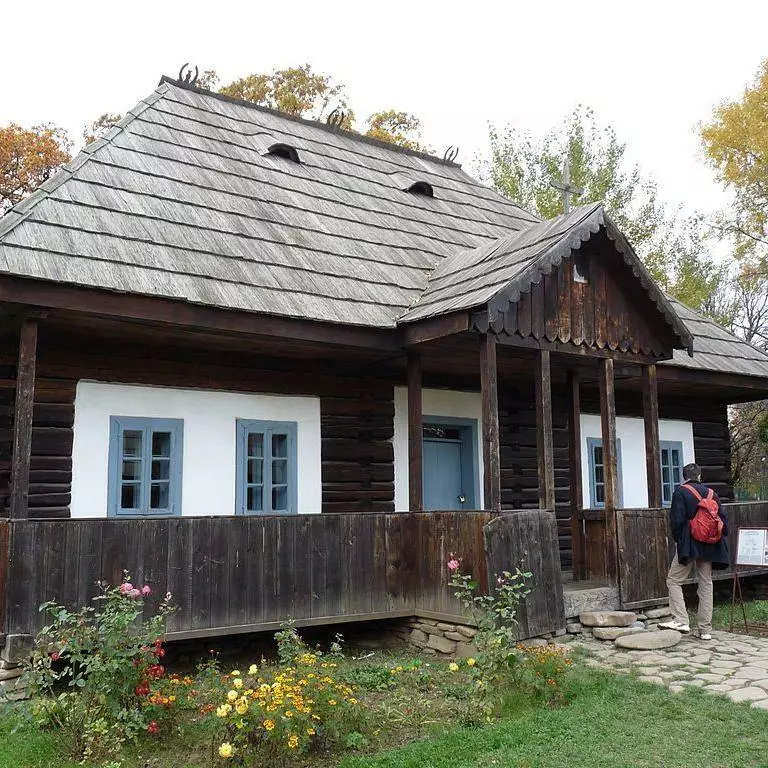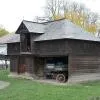Description
From: Bucharest, Museum
Adress: Şoseaua Pavel D. Kiseleff 28-30, București 011347
By its official name Dimitrie Gusti Village Museum, the Village Museum is the work of the man whose name it bears, dating back to 1936.
It is well-known that throughout time, rural life has played an important role in today’s Romania. Therefore, the great importance of the Village Museum is all the more visible if we look at the history of the territory that is Romania today. From ancient times, even in Roman times, the Romanian territory was predominantly rural, but the Romanians changed that by building actual cities in the true sense of the word. This rural situation was maintained until the second half of the 20th century.
Even so, the Romanian rural spirit has persisted in most places, becoming one with the particularities of the places. As such, the existence of a Village Museum in Romania is more than welcome.
What is surprising is that the Dimitrie Gusti Village Museum is in Bucharest, in spite of its urban characteristics. The Village Museum is one of the main attractions of the Romanian capital, its fame crossing the country borders.
The Village Museum spans a surface area of approximately 70 acres, totaling about 70 original houses from different areas of the country. What is truly interesting is the fact that these houses have been completely taken apart piece by piece, transported to Bucharest by train and other means of transport, and reassembled within the Dimitrie Gusti Village Museum, which involved a lot of patience and care. All of this is due to its founder, Dimitrie Gusti.
Located on the shores of Herastrau Lake, the Village Museum receives numerous visitors each year, not only due to its 70 houses from each rural region of the country, but also to its green meadows, vistas that seem to be taken from the same place where the houses originated. The ambiance is more akin to that of a natural park than of a museum, because almost all the elements that recall the olden days and the picturesque atmosphere are reconstructed. Currently, the Dimitrie Gusti Village Museum organizes rousing events that match this place perfectly. These events are quite frequent and include handicraft exhibitions, photography exhibitions and everything related to the preservation of the patrimony and to the recreation of a rural world seemingly forgotten in modern times. This is also where we can find extremely important pottery collections originating from Horezu, Radauti, Baia Mare, Corund, Marginea, Oboga, Romana and Vladesti. Among these pottery items there are plates, basins, pitchers, mugs, candlesticks, tiles and toys. You can also purchase these objects; their prices range from 5 to 120 RON.
Additionally, this museum, unlike any normal museum, also organizes international cultural events.
What is truly astounding about the ambiance recreated in this museum by Gusti is the presence of an oil press, a water mill, a windmill and of traditional and original utensils used in the olden days. It is also known that the oldest house reassembled within the museum is built in the 17th century, and the newest one dates back to the 19th century. It is no wonder that the museum draws such a high number of visitors each year!
The vernacular architecture is one of the main attractions in the Village Museum, and it is based on the work of anonymous popular builders and on cautionary tales regarding the households and monuments within the museum.
There is also a folklore store within the museum, with handicrafts created by various contemporary artisans but which preserve the olden style.
All this, however, is not the only thing you can see in the Dimitrie Gusti Village Museum. This museum represents an unwritten history of the entire country, also housing traditional towels, woven carpets, looms, wooden icons, icons for the hearth and musical instruments of the time, pitchforks and other wood objects. All these can be purchased for a price established by the Village Museum store.
Contact
The Dimitrie Gusti Village Museum is located near the Herastrau Lake on 28-30 Kiseleff Road, 1st District, P.O. Box 011347, Bucharest, Romania. The telephone number is +40 021.317.90.68. The Village Museum also has an official website, www.muzeul-satului.ro and an e-mail address: contact@ muzeul-satului.ro.













Reviews
There are no reviews yet.